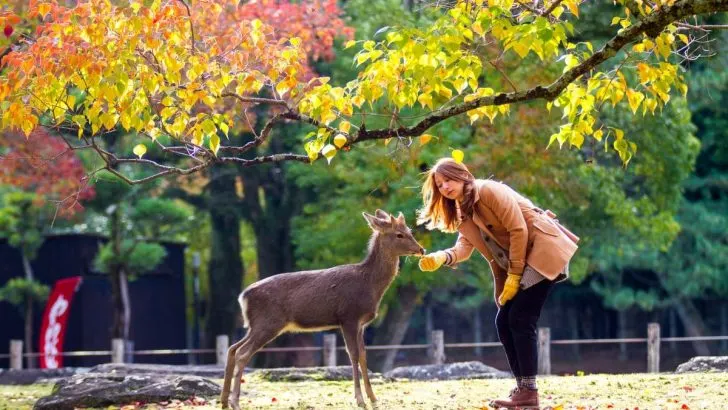Deer resistant perennial is a must for gardens that are often “attacked” by deers. Especially if the plants and flowers you choose have that special scent that deers love. That will definitely make it so much easier to deter deer in your yard.
If you’re thinking that deer-resistant plants are hard to take care of, you’re wrong. Deer-resistant perennials are mostly low-maintenance plants and you won’t have to put extra effort to grow them.
To grow lovely green foliage and bright yellow flowers, you’ll need the sun to part shade garden, the correct soil type, and a regular watering schedule. Eighty percent of these plants are even drought tolerant, amazing I know!
Let’s learn all about deer-resistant perennials so you can grow them in the next early summer season.
What Perennial Is Deer Resistant?
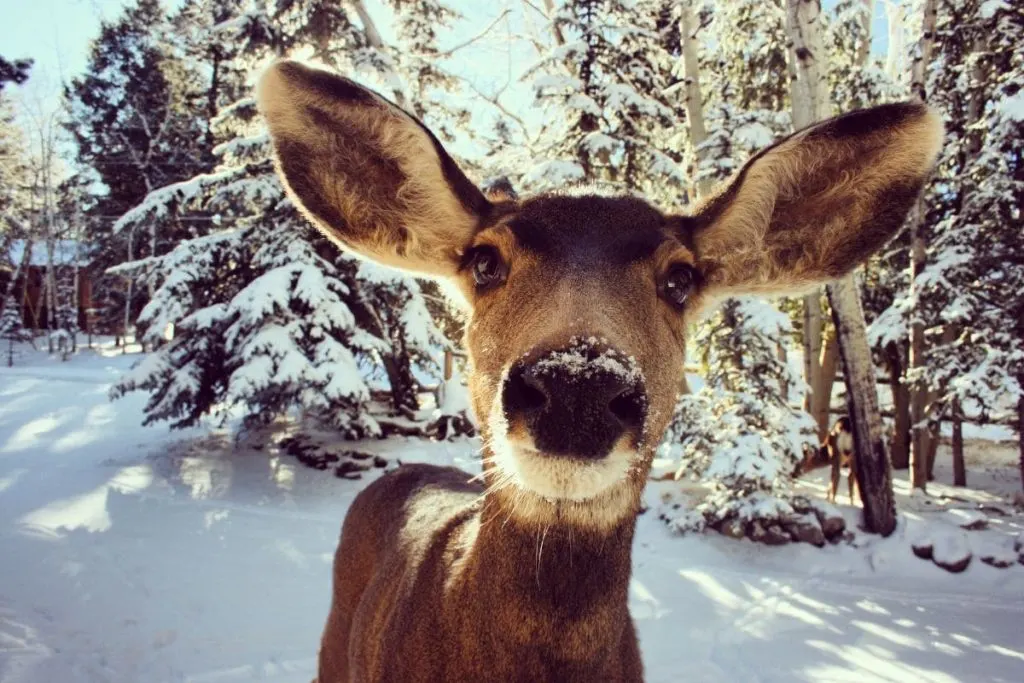
There is not only one perennial plant that is deer resistant. There are many plants that will stop the issue with the deer in your garden. Especially if those plants are poisonous plants and have a scent that deers don’t like.
Below we bring you a Russian sage plant, daffodil, foxglove, poppies, and many others. These bell-shaped flowers, brightly colored flowers will brighten up your garden in a second. Other plants that we didn’t mention will also do the job, don’t worry.
If you live in a specific region such as a tropical climate, search for a native plant that’s perennial. So, what plants do deer not like?
Make your own perfect spring garden that deers won’t destroy this time with our perennials.
11 Deer-Resistant Perennial Plants For Your Yard
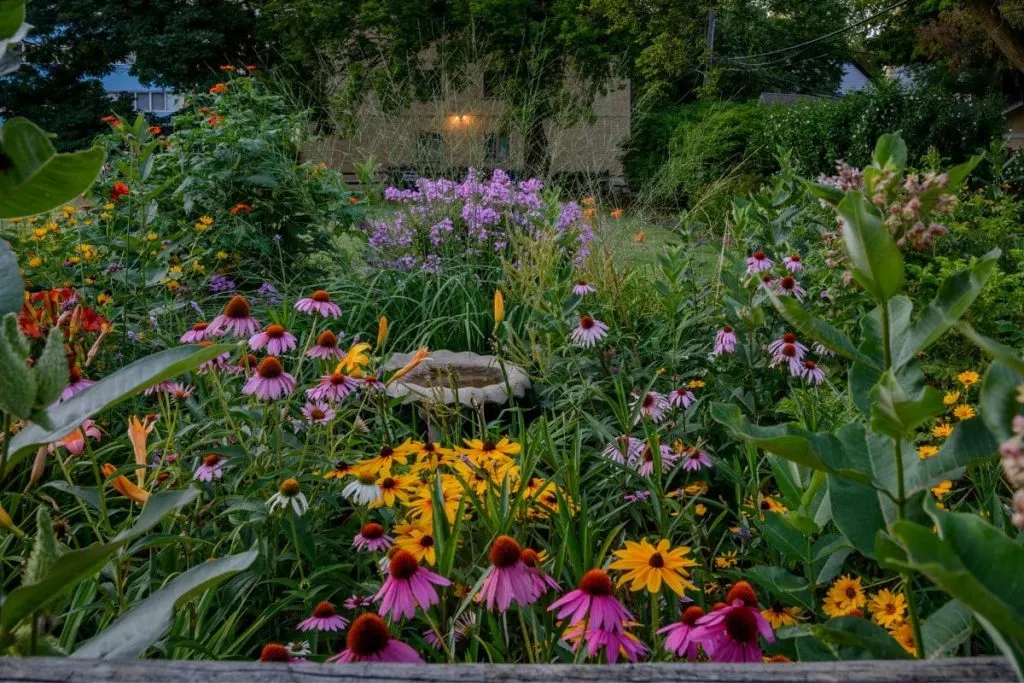
Deer-resistant perennials are great companion plants for the rest of your garden plants. You won’t feel guilty about planting them near your other garden plants. 80% of these plants are not toxic and not invasive, so all of your flowers will be safe.
In the late spring, when the time is right, think about planting some of these perennials if you have issues with deer in your area.
Shade perennial, shrub perennial border plant, showy flowers ot simple purple flowers, it is up to you. You’ll find everything below and then you can make your decision.
Find out more about their care guides and features below.
1. Russian Sage
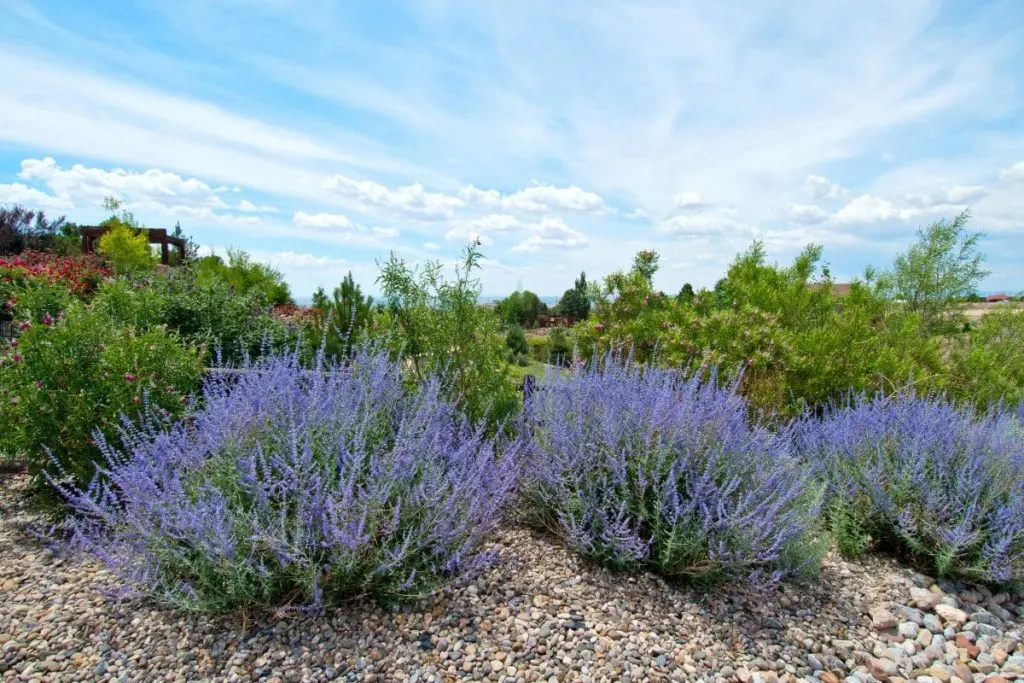
Perovskia atriplicifolia is a wood-based perennial that reminds a lot of lavender flowers. When grown with perfect conditions it can reach a height of 4 feet tall. They have a pungent smell and don’t attract garden pests.
Along with garden phlox, it is one of the easiest plants to take care of. It has silver foliage in the fall and winter time. It is not a poisonous plant so your pets will be safe. people usually plant this flower as garden borders.
It’s a sun-loving plant but it can grow well in the part shade too. Their violet color fades away as the summer ends.
In the late summer, its foliage won’t be violet anymore. However, their flowering period will be a true reward. It attracts butterflies and some birds.
Light needs
Grow russian sage in full sun in the morning and part shade in the afternoon. With these light conditions, they will have a chance to grow into their best shape. Lack of light will slow down their growth.
Watering schedule
The watering schedule for this plant is very simple. Water them with rainwater early in the morning.
They don’t like being watered during the day when the sun is up and when the temperature is too high. Tapwater is also fine.
Soil type and fertilizer
They will grow well in most soil types. However, the best soil type for this plant is sandy soil combined with clay.
They don’t like very acidic soils. The best fertilizer for this plant is the one with nitrogen in it. Fertilize them once per year in the spring.
Temperature and propagation
They grow well in most temperatures. They can stand 50 F and 80 F. Frost and snow don’t suit them very much though.
Propagation is done with the root suckers or with the seeds. Those are the easiest ways to propagate this plant.
2. Daffodil (Narcissus pseudonarcissus)
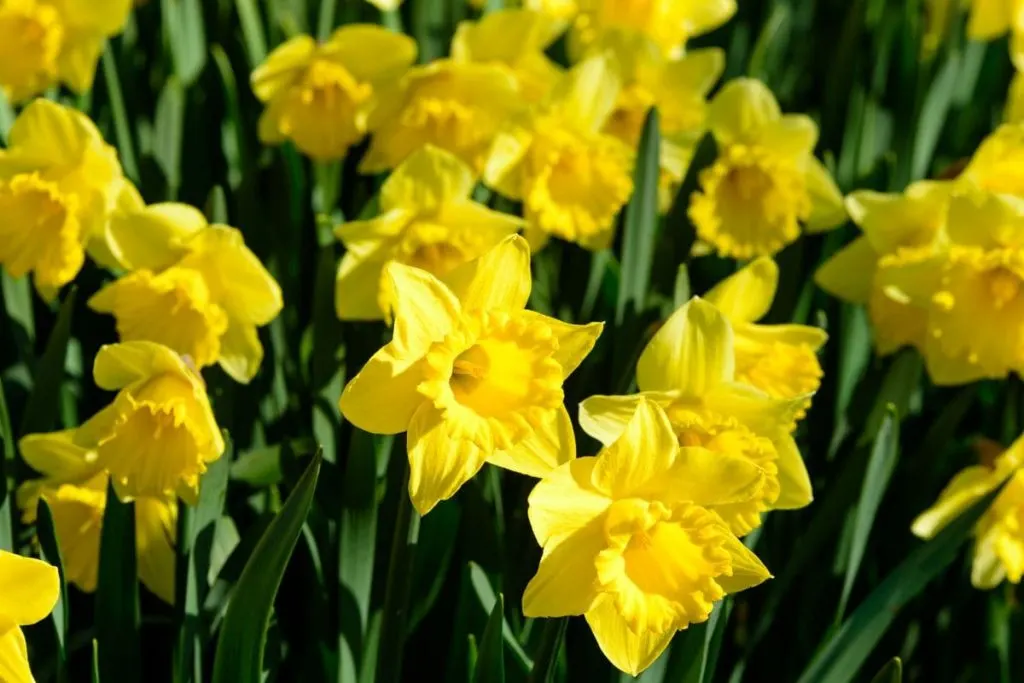
Narcissus is coming from the Amaryllidaceae family and nothing will take your breath away as its simple yellow flowers.
Its maximum height is around 16 inches. It is not a tall garden plant, but with moist soil and light shade, oh la la! It will be in its best shape and you’ll love it.
Deer dislike this flower due to its smell. They have a sweet scent that deer hate! It is a low-maintenance perennial that is usually planted directly in the ground or in the garden beds. No matter how you plant it, it will thrive well.
Daffodil flowers are also flowers for Virgo and flowers for Gemini zodiac signs due to their interesting symbolism. Hungry deer won’t touch your beautiful daffodil and you’ll enjoy your yellow flowers all summer long.
Light needs
Daffodil needs the sun for their growth. We can’t imagine growing this plant without the sun. Even the partial sun isn’t the best option for it.
Provide it with the sun for at least 5-6 hours per day for the best growth and success.
Watering schedule
Daffodils like water, but not too much. You can water them every 7-8 days and they will still be in their best shape.
However, they are not drought tolerant, so don’t wait over 10 days to water them.
Soil type and fertilizer
The soil type that suits the best this lovely plant is perlite soil combined with sand. Some people add a bit of clay soil and that is fine as well.
These plants aren’t heavy feeders so you will have to fertilize them once or twice per year. Use a regular houseplant fertilizer for these plants.
Temperature and propagation
Daffodils don’t stand cold temperatures. They won’t grow in zones below 7. They grow the best in zones 8-10. Frost and snow are a big no for this plant. They are propagated from the seeds or from the root suckers.
3. Foxglove
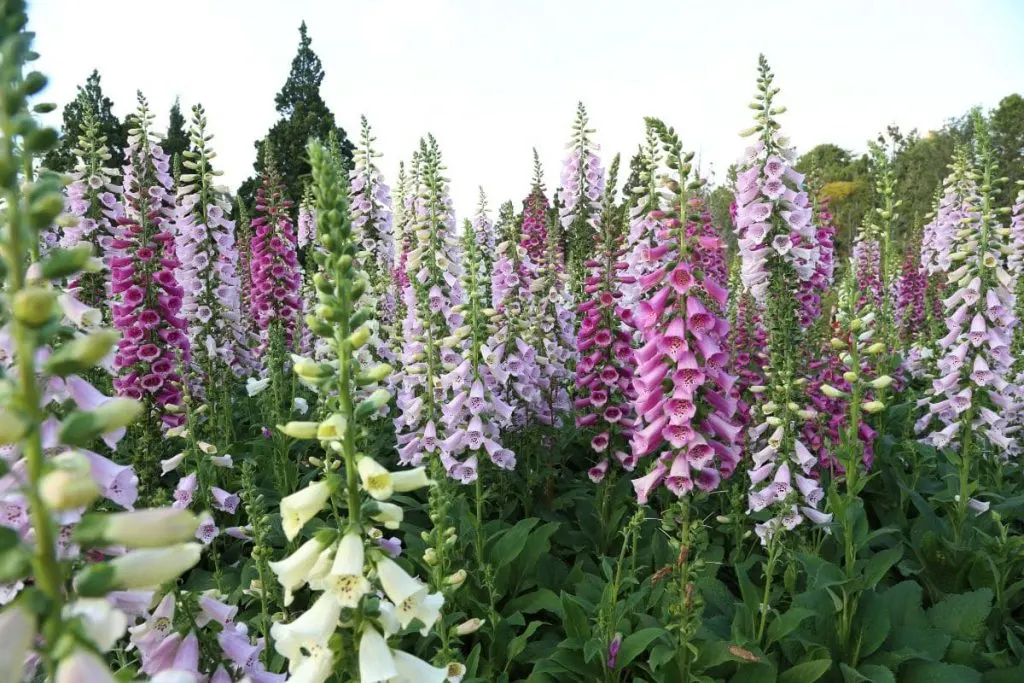
Digitalis purpurea is a flower that is truly impossible not to love. With its maximum height of 5 feet tall, it is one of the low-maintenance plants for Arizona. It has slightly fuzzy leaves and its flowers are a real textbook flower example.
It is grown as an ornamental plant. You can grow it inside and outside but it shows much better results when grown outdoors.
It is not toxic, but it might have some not so much serious consequences if you touch it and then put a finger in your mouth.
Of course, this goes for your kids that are curious and love to explore things by touching them. This plant has many health benefits.
It is used for heart failure and fluid buildup in the body. People with heart prolapse can also use this plant(for higher heartbeat conditions).
Light needs
Light needs for these simple plants are very easy. Grow them where they have at least 2-3 hours of sun per day. They aren’t fans of the shade. It is better if they have bright indirect light for the rest of the day.
Watering schedule
They can tolerate any water type: rainwater, distilled water, or tap water. Water them every 7 days in the morning.
They are not so much drought tolerant but can stand being without water for 10 days as long as that doesn’t happen very often.
Soil type and fertilizer
They will grow the best in peat moss soil combined with a bit of sand. They hate very acidic soils. You have to fertilize them once a year with 10-15-10 fertilizers.
Temperature and propagation
They can grow well in zones 6 to 10, but they grow the best in zone 8. That zone has the perfect humidity and temperature conditions they need. They are propagated with the seeds.
4. Oriental Poppies
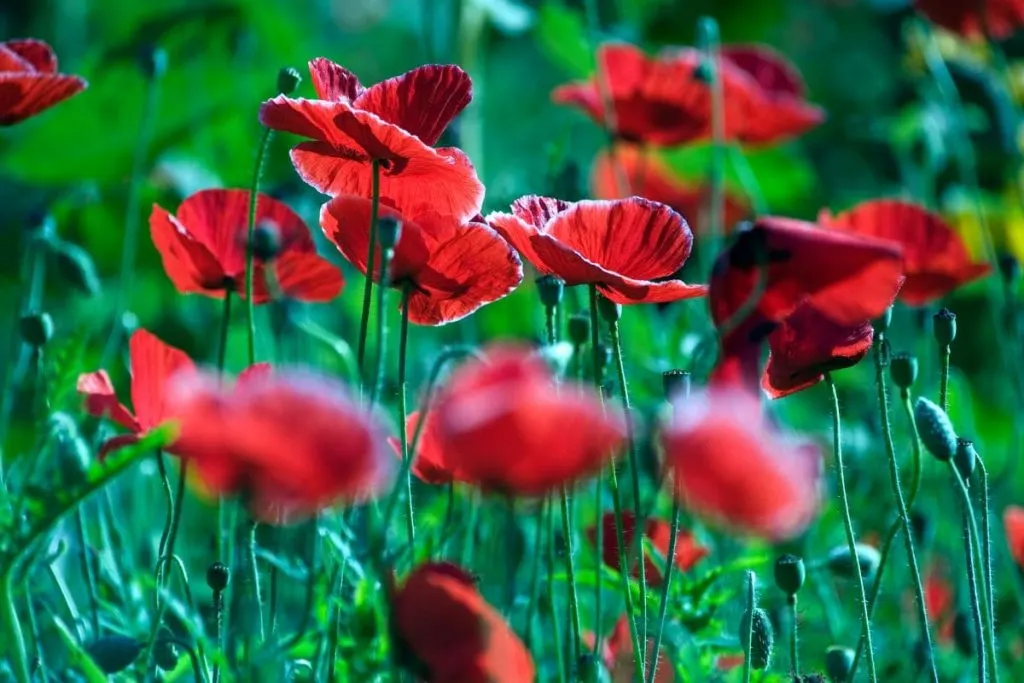
Papaver orientale is one of the flowers for Taurus due to its magical symbolism. Among this powerful title and symbolism, the poppy flower is today also the national flower of Poland.
Its maximum height can reach 3 feet tall when grown in perfect conditions. Poppies are herbaceous plants and you will definitely love their vibrant red color.
They are great for breaking the monotony in green gardens. Poppies contain papaver somniferum which is used as a narcotic opium.
That is possible to feel its smell as well. I’m sure you once smelled this flower as a child and maybe, just maybe, felt a slight dizziness in your head for a second. That is exactly the effect it has once that’s revised.
Light needs
Poppies will demand at least 5 hours of sunlight. They hate strong afternoon sun. Make sure they gate as much as they can of the morning sunlight. In the afternoon, they need partial shade.
Watering schedule
They need water every 7 days. They are not drought-tolerant plants and you will definitely notice their droopy appearance when the lack of water occurs. They love rainwater.
Soil type and fertilizer
Grow them in loamy soils. Those are perlite and clay soils. They are not heavy feeders. You can fertilize them in the springtime with 10-15-15 fertilizers.
Temperature and propagation
They don’t stand cold temperatures very well. They grow the best in the temperature ratio such as 65 to 75 F. They don’t like frost either. They are propagated with the seeds in the early spring.
5. Daylily
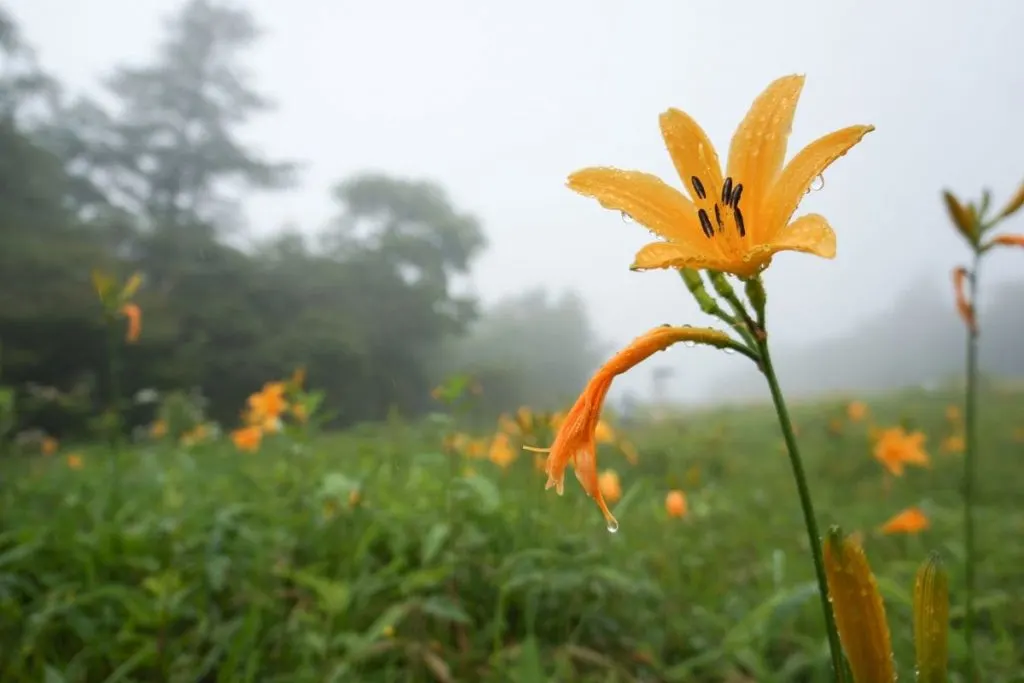
The Hemerocallis plant is an amazing low-maintenance plant that grows in dark orange color. It can grow up to 1 to a maximum of 1.5 feet tall. They belong to the Hemerocallis genus and they’re known for their many symbolisms today.
Lily is today’s national flower of Italy and a unique red lily is a Japanese death flower. Flowers of the daylily are edible. They rarely grow in yellow colors, they are mostly found in the orange version.
The difference between a regular lily and a daylily is in the stems that are coming from the base of the plants. Multi-stems are always daylily flowers and single stems with leaves are regular lilies.
Light needs
They love the full sunlight position. Lilies thrive best with direct sun conditions. They need at least 7 hours of direct sunlight. The rest of the day they can spend in the partial shade position.
Watering schedule
They prefer distilled water the most. Water early in the morning or late in the evening. Water them every 7 days and keep your watering schedule regular and in the routine.
Soil type and fertilizer
Lilies thrive best in perlite soils. You can add at least 20% of the sand to the perlite soil. Lilies prefer regular houseplant fertilizer. Fertilize them in the spring and in the late summer.
Temperature and propagation
They don’t stand cold temperatures at all! They will dry, their flowers will look droopy, and their leaves as well.
Cold temperatures are simply a big no for this plant. They are propagated from the seeds that are collected in the late summer.
6. Goat’s Beard
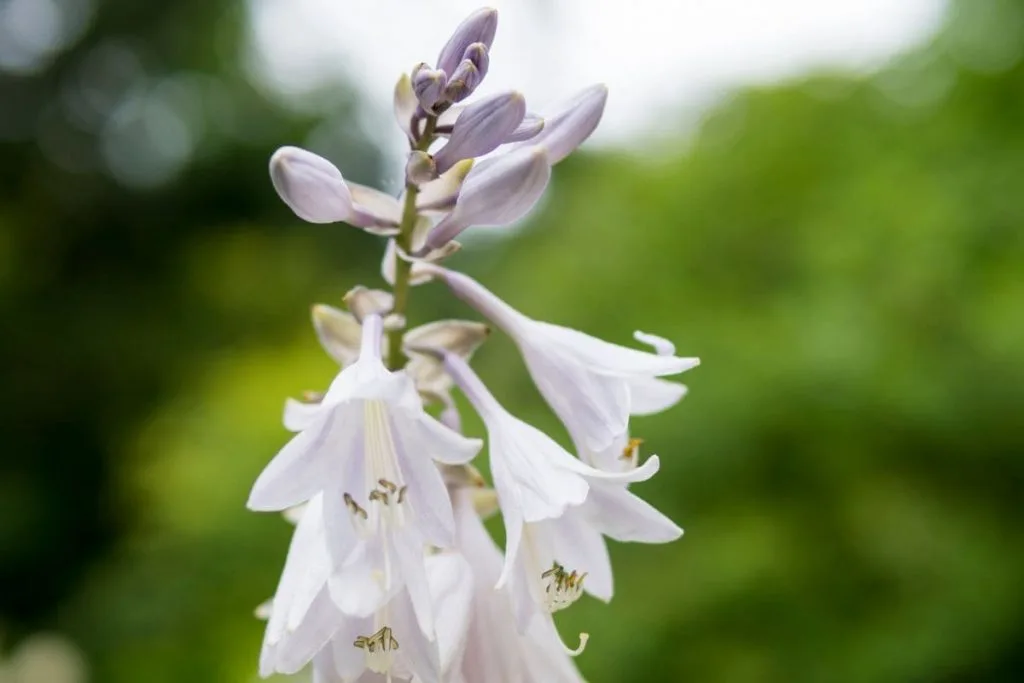
Aruncus aethusifolius is a delicate garden plant with a maximum height of 12 inches. Goat’s beard is a perennial herbaceous plant from the rose family Rosaceae. The stems are erect and grow up to 4 feet tall.
The stem is short, woody, branched, and strong. The leaves are alternate, compound, located on long petioles, double or triple-splayed into egg-shaped leaflets with deeply serrated edges and pointed tips.
The flowers are mostly unisexual and dioecious and small. Male flowers are composed of five yellowish-white petals.
Light needs
They prefer at least 2-3 hours of direct sunlight. However, the more sun you give them, the more benefits you’ll see from this plant. They don’t like shade much. Partial shade is fine only when provided with sunlight before.
Watering schedule
Water them every 7-8 days with tap water. They are salt tolerant so you don’t have to worry about the type of water much. They are not so drought tolerant so don’t wait until the soil gets too dry before watering.
Soil type and fertilizer
They work best in sandy soils. They hate acidic soils, so more than 40% of acidic soils are too much for them. Fertilize them with fertilizers high in nitrogen. You can also use organic matter when planting.
Temperature and propagation
They thrive the best in the ratio between 65 and 70 F. They can grow, but not big fans of cold temperatures. Propagate them with the seeds in the early spring time.
7. Bee Balm
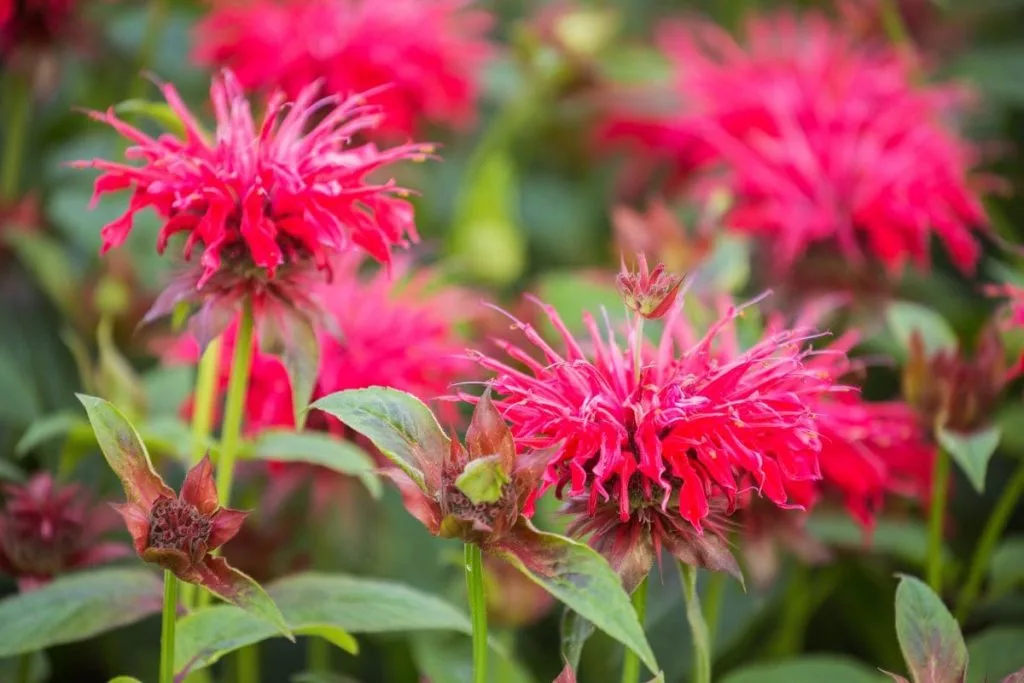
Monarda didyma is native to North America and thrives in forested areas. Also known by its botanical name Monard, bee balm is very attractive to bees, butterflies, and hummingbirds.
The bee balm flower has an open daisy shape, and tubular petals in shades of red, pink, purple, and white.
Bee balm plants are perennials, returning year after year to add cheerful color to your garden. There are also dwarf varieties less than 7.8 inches. Dwarf varieties are excellent for container gardens.
Light needs
Bee balm is a very low-maintenance plant. They can grow well in the bright indirect light position. They don’t need much sun to grow well. Even an hour of the sun will benefit them a lot.
Watering schedule
Water them every 7-8 days with any type of water. They are also salt tolerant as the plant above. They are drought-tolerant as well.
Soil type and fertilizer
They work best in loamy soils. Choose the clay soil or perlite with sand soil combination. These plants don’t like too much fertilizer. Once per year is more than enough to fertilize these plants.
Temperature and propagation
They will grow well in colder temperatures as well. 40 F and 45 F won’t’ be destructive for this plant.
They don’t like tropical climates. Propagate them with the seeds in the late spring or early summer time.
8. Friged Bleeding Hearts
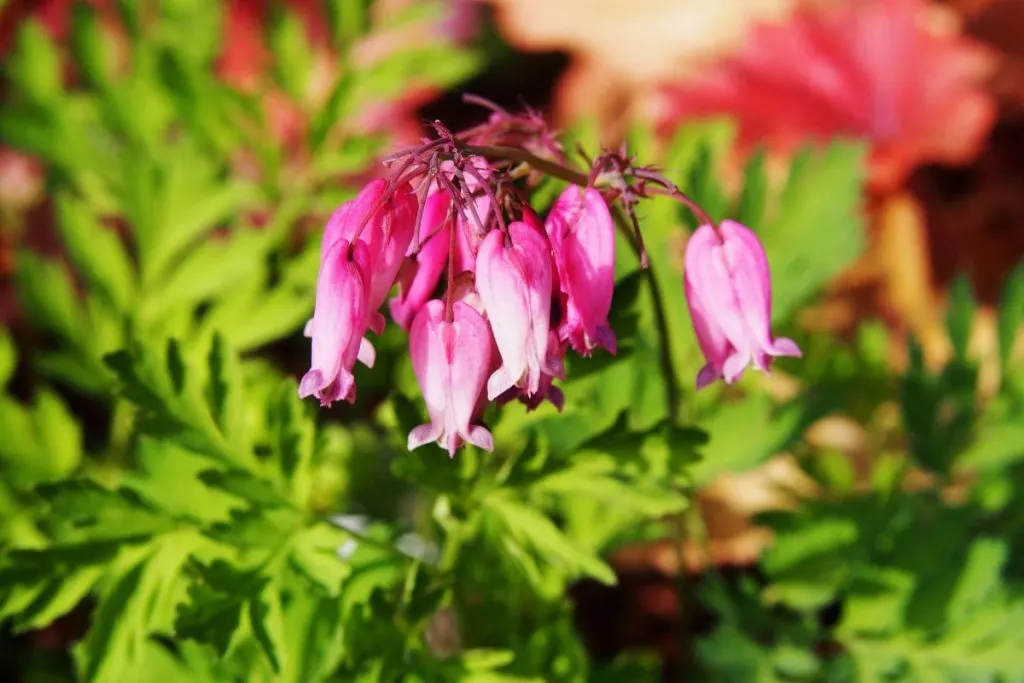
Dicentra Eximia is an amazing perennial plant that can grow up to 18 inches tall when grown in perfect conditions.
They have a very unique form of leaves and very interesting colors as well. Its leaves are grey-green.
It grows well in zones 3 to 9. However, its best shape will be in zone 6. They bloom pretty late in the spring time, but make great garden plants.
They grow the best in rock gardens and make a perfect deer-detest plant. One of its common names includes the Chinese plant name.
Light needs
Bleeding heart plants need at least 4 hours of direct sunlight per day. When they have a lack of sun conditions it will be very obvious from their appearance. They don’t like full shade growing conditions.
Watering schedule
Watering should be done in the morning before the sun comes up. Any type of water will suit well your bleeding hearts plant. Avoid watering them in the afternoon.
Soil type and fertilizer
The soil type that is the best for this plant is sandy soil. They will show the best results in such soil. You don’t have to fertilize this plant.
Temperature and propagation
They grow well in continental climates much more than in tropical climates. The best ratio is between 60 and 65 F. They are propagated from the seeds or cuttings in the early summertime.
9. Monkshood
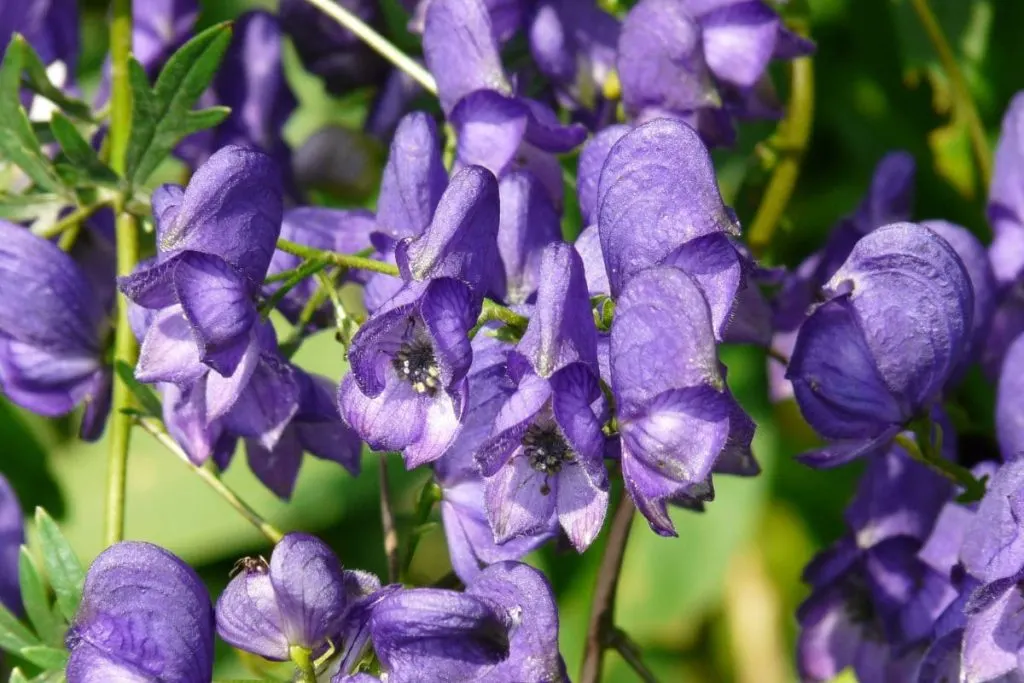
Aconitum napellus plants grow up to 3 feet tall. They belong to the Ranunculaeae family. They belong to a family that has over 300 plant species.
One of its common names includes wolf’s bane queen of poison, blue rocket, and devil’s helmet. In the past, people used to plant this plant in their gardens to poison the wolves that would come near their homes.
The smell would attract them but once they after it, they would be dead very soon. These plants are poisonous to your pets too. It is believed that this plant can cause a heart attack as well.
Light needs
This plant doesn’t need much sun to thrive well. With 2 hours of sunlight per day, they will grow very well.
They don’t like shade much either. Provide them with bright light for most of the day.
Watering schedule
Watering should be done in the morning or in the late evening with rainwater or distilled water. This plant doesn’t like much tapwater. Water them every 7 days.
Soil type and fertilizer
The best possible soil type for this plant is perlite soil. You can always mix it with a bit of peat moss soil and a bit of sand. That will create a great mix for this plant.
Temperature and propagation
This plant doesn’t stand the cold temperatures very well. They will thrive the best in conditions such as 70 F. They are propagated in the springtime from seeds.
10. Peony
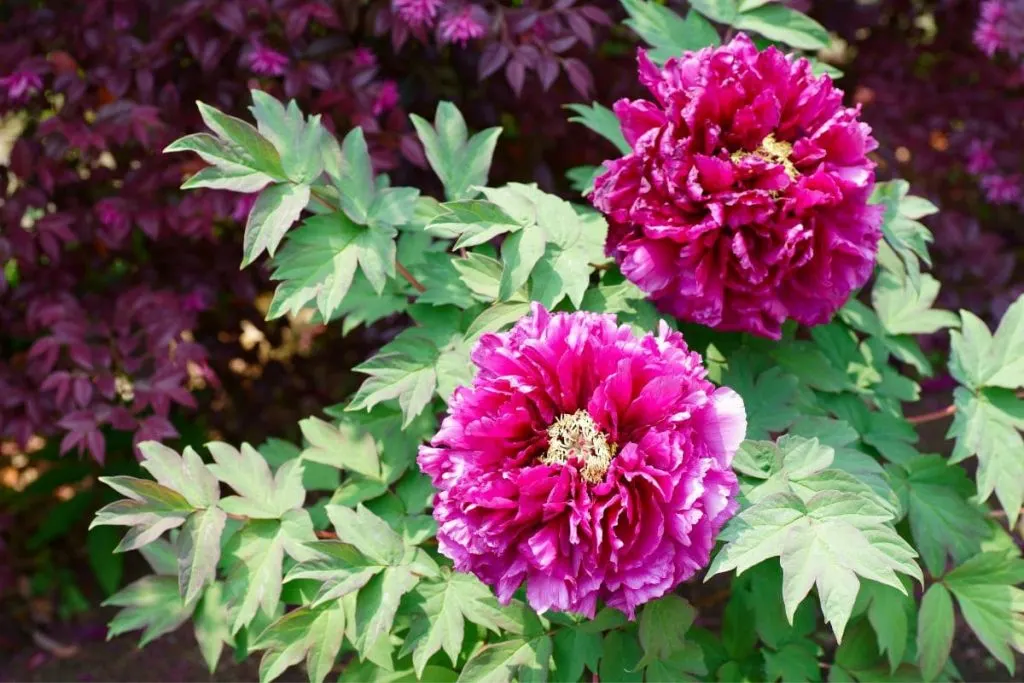
Paeonia suffruticosa is a 3 feet plant that is nowadays a national flower of Mexico. They belong to the genus Paeoniaceae.
Peony flowers remind me a lot of pink roses flowers. However, they don’t belong to the same genus and of course, they do look different when you look from a closer perspective.
There are over 30 known species of this amazing flower. They are well known for their large blossoms that bloom in the late spring, sometimes in the early summer as well.
They live more than two years, but if they go through frost, for example, it is not 100% sure that they will come back the next year.
Light needs
Plant your peony flower in a position where it has the sun for at least 5 hours per day. If you want your flowers to get vibrant pink or yellow colors, make sure they have enough sunlight.
Watering schedule
Water peony flowers in the morning with the gallon of water for the mature adult plants that are planted directly in the ground. That way, you can skip watering for the next 14 days.
Soil type and fertilizer
They thrive the best in black soil combined with perlite soil. Fertilize them with organic matter in the spring or with the 15-15-10 fertilizer.
Temperature and propagation
These plants won’t thrive greatly in cold temperatures. They prefer the temperature to be at least 65 F. They don’t like tropical climates either.
11. Black Cohosh
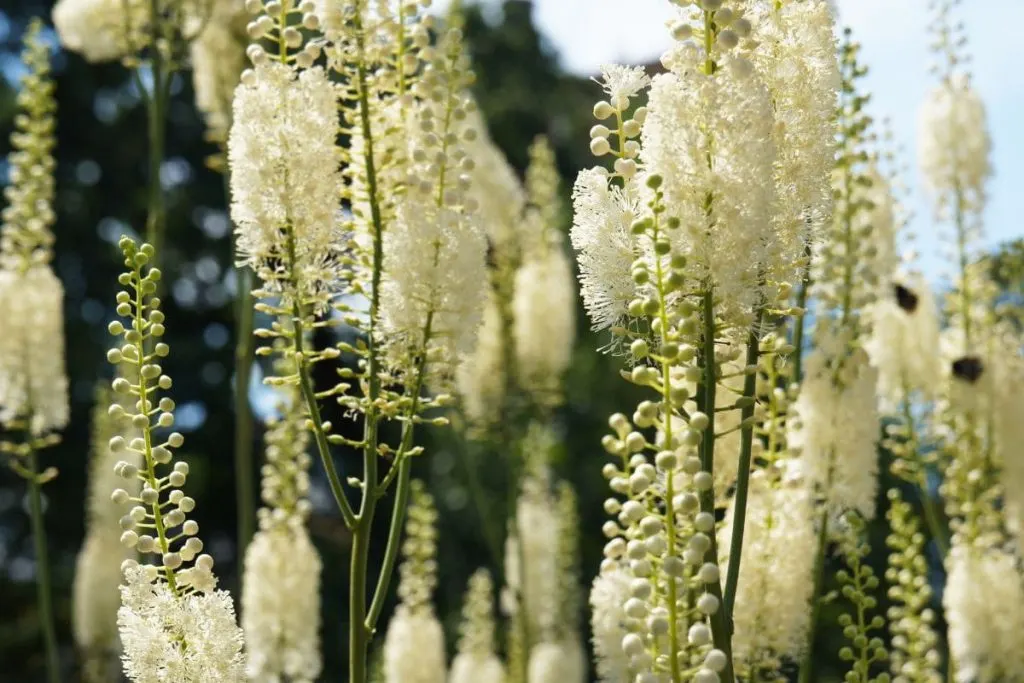
Cimicifuga racemosa is another amazing perennial that can grow up to 4 feet. This plant is a member of the so-called buttercup family plant.
They belong to the Ranunculaceae plant family. They originate from Noth America. It is used for its percentage of estrogen in the flowers. It is mostly grown as an outdoor plant.
Light needs
Make sure your plant has at least 4 hours of sunlight per day. They won’t stand the shade much, but you can provide them with a partial shade for a couple of hours. That won’t do any harm to the plant.
Watering schedule
Water them with tapwater or rainwater every 8-10 days. They are not a big fan of drought time. Make sure the soil doesn’t dry too much before the next watering.
Soil type and fertilizer
They will show the best results in soils such as sand and clay. They don’t like acidic soils. Fertilize them with 15-10-15 fertilizer or with regular houseplant fertilizer. It will have enough nutrients for your plant.
Temperature and propagation
Make sure the temperature doesn’t drop under 55 F if you’re planting to grow this plant. They don’t love cold temperatures. Propagate them from seeds in the spring time.
Wrapping Up
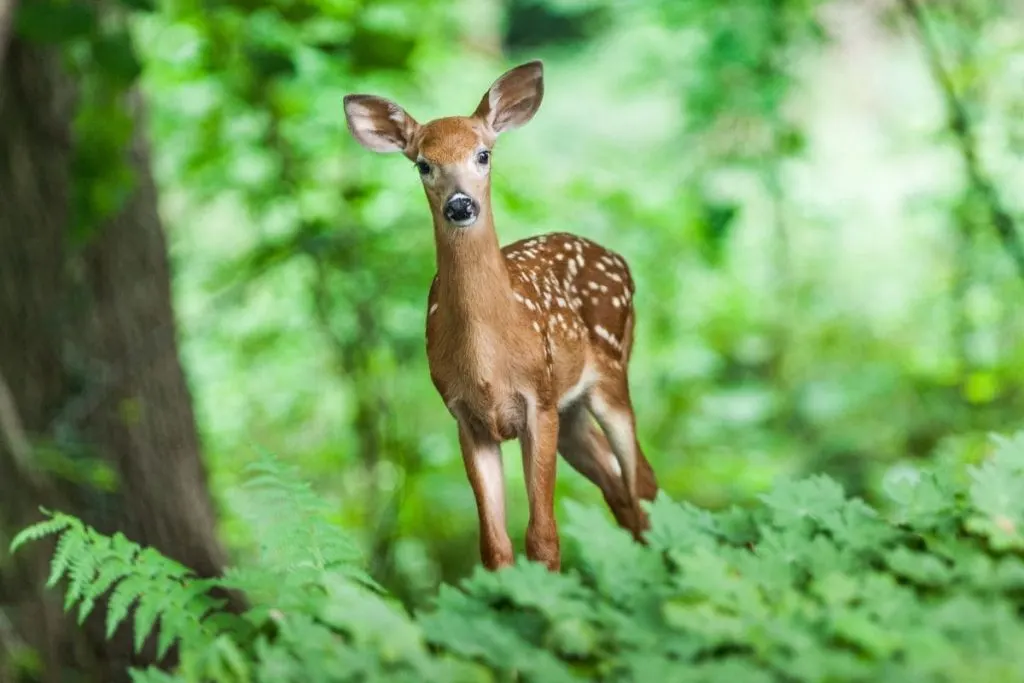
We hope you enjoyed our article about the deer-resistant perennial. As you could’ve seen, you will be able to find a very low-maintenance plant too.
Among that, we stumbled upon some aromatic herbs that deer hate. A deer-resistant garden might be your new favorite garden.
White flowers, yellow flowers, and red flowers won’t demand much. Full sun to part shade, well-drained soil, regular watering schedule, nice garden bed, and voila!
Until early fall you’ll have deer-resistant perennials that bloom all summer.
Do deer tend to attack your favorite plants? Not anymore. With fragrant foliage and an herb garden full of fragrant flowers and prickly plants that deer hate. Deer avoid plants such as red hot poker, daffodil, and similar ones.
Hope you learned a lot with us today, that is it for today’s article.

